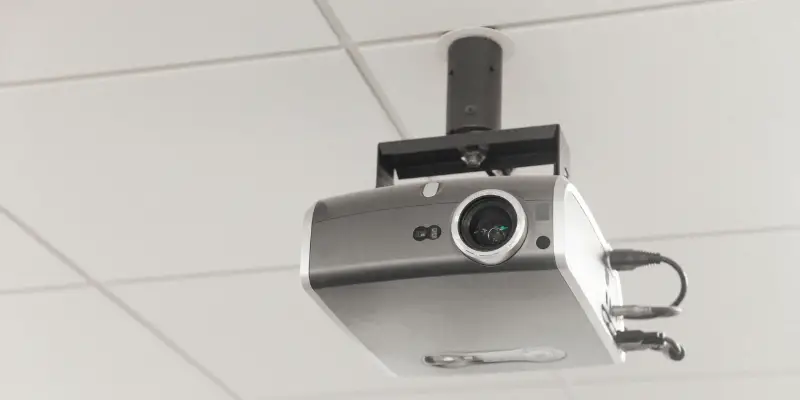It is fun to have a gadget and make the most of it but do you know what is even more fun, knowing how the gadget works.
One such gadget is overhead projectors dominating the market by delivering precise images with ample brightness.
If you want to understand the working behind the projections of overhead projectors, this short guide will walk you through the process of projection with overhead projectors.
Before understanding the functioning of the projector, it would be better to know what it is first.
What is an Overhead Projector?
It is the simplest kind of projector that follows the basic principle to project an image onto the screen.
Light is projected by illuminated transparency by a converging lens to enlarge the image onto the screen or wall.
This projector is somewhat exclusive for educational presentations, and training purposes.
How Does An Overhead Projector Work?
Overhead projectors utilize converging lenses and mirrors to form a real image of the transparency onto the screen.
The image projected is exactly like the original image on the transparency film. The lamp amply brightens the transparency and the special surface behind it.
Fresnel lens directs the lights from the transparency through the main lens of the projector.
It bends the rays of light spreading outward from the glass cover and merging them to one spot on the screen.
For instance, draw a green dot on the transparency, light rays spread outward from the dot, and some pass through the lens.
The lens bends these rays, merging them on a single point on the screen to form a green dot.
This pattern of light creates a real image that looks precisely like the original object.
Real images formed on the rear projection screen are generally upside-down and backward, however, overhead projectors project the right side up by utilizing the mirror to flip the image over.
Owing to the vertical flip and side-to-side reversal, the screen image becomes readable as the right side of the transparency becomes the left side of the image.

Different Parts of Overhead Projectors
Overhead projectors have different parts and each part performs a specific function. The main components of Overhead Projectors are base, reflector, mirror, cooling fan, fresnel lens, arm, and head.
Base
The base is the most important part of the overhead projector that contains a lamp and a clear glass covering on top.
Transparencies are placed on the glass covering surfaces. The lamplight lights up the glass cover and any transparency on it.
The light passes through the transparency sheet to form a real image.
Reflector and Mirror
The Reflector is present in the base that directs the light towards the mirror to prevent lamplight from scattering or projecting a dim or unclear image.
The base mirror points and reflects the light upward towards the glass cover. Angled at 45°, the mirror captures and points the light in an upward direction.
Cooling Fan
Overheating is a serious concern for projectors and it shortens the lifespan of a projector.
Like the reflector and the mirror, the cooling fan is also found in the base.
It dissipates the heat produced by the lamplight preventing overheating and projector shutdown caused because of it.
Fresnel Lens
It is one of the two lenses used in the overhead projector, fresnel is a circular lens located under the glass cover, it focuses the light to one point, to the direction of the head. It bends the light rays, gathering them onto one spot in the head.
Arm
The arm is also linked to the base and its job is to hold up the head. The adjustable arm helps to focus the image on the screen.
Focus can be adjusted by moving the head component up and down.
Head
The head of an overhead projector contains a mirror and the objective lens and it is open from the bottom to allow light to enter.
As the light escapes through the transparency into the head, the image is projected through the lens and onto the mirror.
The mirror flips the image and directs it towards the screen for display.
Conclusion
Understanding how overhead projector works is important to build it yourself or to make the most out of it. This projector is quite useful for projecting instructional materials, documents, and images.
